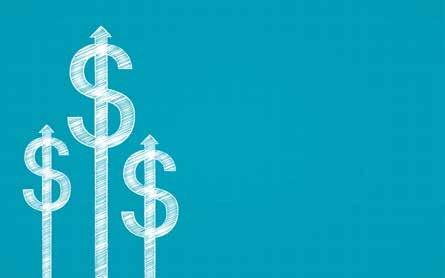
2 minute read
Taxpayers may be subject to backup
from AZ CPA May/June 2020
by ASCPA
Backup withholding also may apply to gambling winnings (Form W-2G (PDF)) that aren’t subject to regular gambling withholding.
Backup Withholding Primer
Advertisement
by Lisa A. Novack
When it applies, backup withholding requires a payer to withhold tax from payments not otherwise subject to withholding. You or your client may be subject to backup withholding if you fail to provide a correct taxpayer identification number (TIN) when required or if you fail to report interest, dividend or patronage dividend income.
Banks or other businesses that make certain types of payments to you must file an information return with the IRS on Form 1099 showing payments that you received during the year. A Form 1099 includes your name and TIN such as a social security number (SSN), employer identification number (EIN), or individual taxpayer identification number (ITIN). The Form 1099 will also report any amounts withheld under the backup withholding rules.
Payments Subject to Backup Withholding
Backup withholding can apply to most kinds of payments reported on Form 1099, including: • Interest payments (Form 1099-INT (PDF)); • Dividends (Form 1099-DIV (PDF)); • Patronage dividends, but only if at least half of the payment is in money (Form 1099-PATR (PDF)); • Rents, profits, or other income (Form 1099-MISC (PDF)); • Commissions, fees, or other payments for work performed as an independent contractor (Form 1099-MISC (PDF)); • Payments by brokers and barter exchange transactions (Form 1099-B (PDF)); • Payments by fishing boat operators, but only the part that’s in money and that represents a share of the proceeds of the catch (Form 1099-MISC (PDF)); • Payment Card and Third-Party Network Transactions (Form 1099-K (PDF)); and • Royalty payments (Form 1099-MISC (PDF)).
Withholding Rules
When you open a new account, make an investment, or begin to receive payments reportable on Form 1099, you must provide your TIN. For certain types of payments, you must provide the TIN in writing and certify under penalties of perjury that it’s correct. In those cases, the bank or business will give you Form W-9, Request for Taxpayer Identification Number and Certification (PDF) or a similar form. If your account or investment will earn interest or dividends, you must also certify that you’re not subject to backup withholding due to previous underreporting of interest and dividends.
You may be subject to backup withholding and the payer must withhold at a flat 24% rate when: • You don’t give the payer your
TIN in the required manner. • The IRS notifies the payer that the TIN you gave is incorrect. • The IRS notifies the payer to start withholding on interest or dividends because you have underreported interest or dividends on your income tax return. The IRS will do this only after it has mailed you four notices over at least a 120-day period. • You fail to certify that you’re not subject to backup withholding for underreporting of interest and dividends.
How to Prevent or Stop Backup Withholding
To stop backup withholding, you’ll need to correct the reason you became subject to backup withholding in the first place. This can include providing the correct TIN to the payer, resolving the underreported income and paying the amount owed, or filing the missing return(s), as appropriate.
If you receive a notice from a payer notifying you that the TIN you gave is incorrect, you can usually prevent








